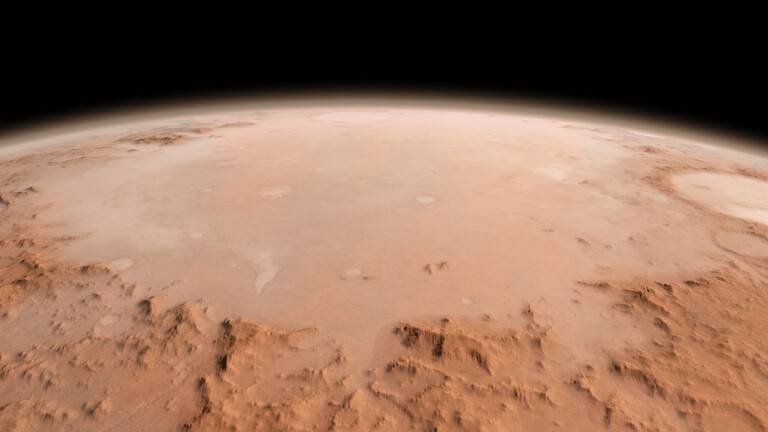Scientists have discovered that the reflective spots recently observed at the southern pole of Mars may not indicate the presence of liquid water as previously expected. While water exists in many locations on the surface of Mars, including the poles, astronomers detected significantly bright reflections beneath a layer of pure water ice that is 1.4 kilometers thick using the European Space Agency's Mars orbiter.
However, computer simulations created by a team from Cornell University suggest that another phenomenon, namely the layering of geological features on the Red Planet, may be the true reason behind these reflections. Strong reflections in these simulations can be created without liquid water or other rare materials, making the presence of liquid water beneath the southern polar deposits of Mars unlikely.
The simulations consist of layers made of four materials: the atmosphere, water ice, carbon dioxide ice, and basalt, with the computer monitoring how each layer interacts with electromagnetic radiation. Scientists found that three layers made up of two layers of carbon dioxide separated by one layer of ice could produce reflections similar to those seen on the planet's surface.
Dan Lalich, a co-researcher at Cornell's Center for Astrophysics and Planetary Sciences, stated: "On Earth, bright reflections are often indicators of liquid water, even in buried lakes like Lake Vostok (under the Antarctic ice sheet, which has been beneath 3 kilometers of ice for millions of years). However, on Mars, the prevailing view is that the atmosphere is too cold for similar lakes to form." He added, "I used layers of carbon dioxide embedded in water ice because we know they are present in large amounts near the surface of the ice cap. In principle, I could have used layers of rock or even dust-laden water ice and would have obtained similar results."
The discovery of water on the surface of Mars is vital as it could indicate the presence of life there, as well as being a resource for humans to establish a settlement. Lalich clarified: "None of our work rules out the potential existence of liquid water there. We just believe that the layering hypothesis is more consistent with other observations."
Previous research published in January supports the idea that water is not present beneath the pole, according to Cyril Grima, a planetary scientist at the University of Texas Institute for Geophysics, who said: "It seems that volcanic rocks buried beneath the ice are the most likely explanation, as iron-rich lava flows on Earth can leave behind rocks that produce similar reflections, and the same effect is likely occurring on our neighboring planet."




